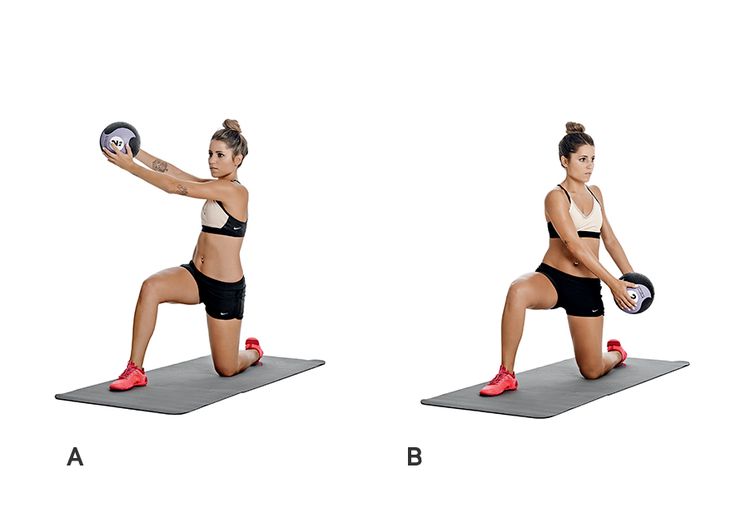19 de May de 2025
Sandbell Workout: Exercise Guide, Tips and Benefits
A Sandbell workout is a highly versatile, full-body training method that blends strength, stability, cardio, and coordination. Using a sand-filled neoprene disc (the Sandbell), these workouts allow for dynamic, fluid movements that challenge both muscles and movement control. Suitable for athletes, fitness beginners, and anyone looking to break routine, Sandbell training brings variety and function to any strength and conditioning plan.
What Is a Sandbell?
A Sandbell is a soft, disc-shaped weight filled with sand and wrapped in durable neoprene. It’s designed to be gripped, thrown, swung, slammed, or lifted—making it a flexible tool for a wide range of training styles. Unlike rigid dumbbells or kettlebells, the shifting sand inside creates instability, forcing your muscles to react, stabilize, and adapt throughout each movement. This makes it ideal for functional, high-intensity, and injury-prevention workouts.
How to Do a Sandbell Workout Properly
- Choose 4–6 exercises: Combine strength, cardio, and mobility-based moves.
- Select your weight: Start with a moderate Sandbell (6–10 lbs) and progress as needed.
- Focus on form: Move through a full range of motion while maintaining control.
- Add power and flow: Use slams, tosses, or rotational movements to increase dynamic intensity.
- Structure your session: Try circuits (30–45 seconds per exercise), EMOMs, or AMRAPs for varied training effects.
Tip: Sandbell workouts are high on coordination—so start slow, master control, and increase speed or complexity over time.

Muscles Worked by a Sandbell Workout
Depending on the exercise selection, Sandbell training can hit nearly every muscle group:
- Shoulders and arms: Slams, throws, and presses engage deltoids, biceps, and triceps.
- Core and obliques: Rotation, carries, and stabilization moves target the entire trunk.
- Glutes and quads: Lunges, squats, and power lifts emphasize lower-body strength.
- Back and hips: Dynamic movements activate posterior chain muscles.
Benefits of Sandbell Workouts
- Improved Grip and Coordination: The shifting weight challenges fine motor control.
- Full-Body Functional Training: Engages multiple muscles and planes of motion.
- Joint-Friendly Resistance: The soft construction reduces impact stress.
- Versatile and Portable: Suitable for indoors, outdoors, or limited-space setups.
- Enhances Recovery and Fatigue Management: A great alternative to heavy lifting during deload phases or rehab.
Common Mistakes to Avoid
- Using Excessive Weight Too Soon: Start light to learn technique.
- Sacrificing Form for Speed: Prioritize smooth movement before adding intensity.
- Skipping Core Engagement: Always brace your trunk—especially during throws and rotational moves.
- Neglecting Warm-Up: Dynamic mobility prep is essential for explosive movements.

Variations of Sandbell Exercises
- Sandbell Slams: Mimic med ball slams with a softer landing.
- Rotational Lunge with Sandbell Swing: Combine strength and coordination.
- Overhead Sandbell Carry: Builds shoulder stability and core control.
- Sandbell Push-Up Drag: Drag the bell side to side while maintaining a strong plank.
- Side Toss or Wall Bounce: Excellent for rotational power and sport transfer.
How to Include Sandbell Workouts in Your S&C Program
Use Sandbell sessions as a main workout or finisher 1–2 times per week. Combine 4–6 functional exercises in a circuit-style format for metabolic conditioning or focus on 2–3 strength-based moves to improve control and movement patterns. Sandbells are also ideal during recovery-focused sessions or as tools to reduce fatigue while maintaining intensity and movement variability.
FAQs About Sandbell Workouts
What are the benefits of sandbells?
They improve coordination, core stability, functional strength, and are easier on the joints compared to traditional weights.
What is a sandbell?
A sandbell is a neoprene-filled disc of shifting sand used for dynamic and functional fitness training. It’s safe, portable, and incredibly versatile.
What weight are sandbells?
Sandbells range from 2 to 50 lbs. Beginners often start with 6–10 lbs, while more advanced users may use 15–25+ lbs for power moves.
Sandbell workouts are a smart, scalable, and fun way to challenge your body across multiple planes of motion. Whether you’re building power, managing fatigue, or seeking a joint-friendly training alternative, integrating Sandbells into your strength and conditioning routine adds purpose and variety to every session.
